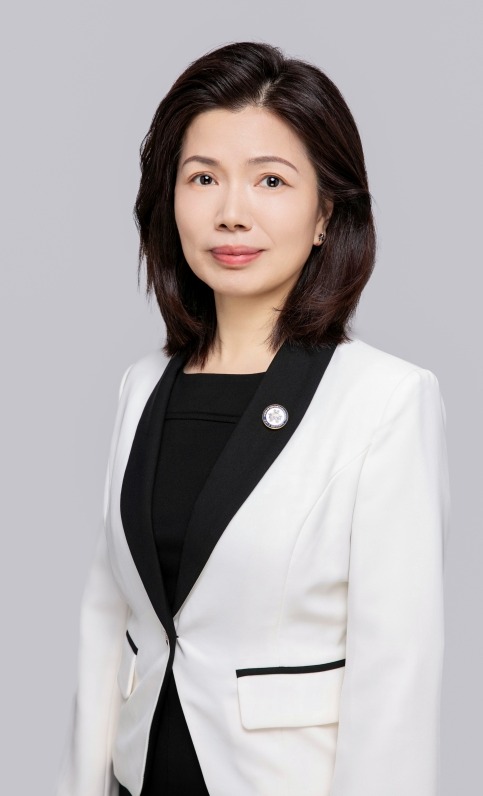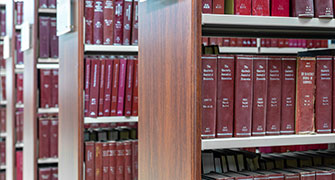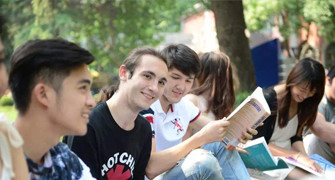
| BAI Xiaoyan |
Associate Professor |
Email: bxiaoyan@163.com |
Phone : 027-68753047 |
PhD Wuhan University, China (2003-2008) |
MSc Zhongnan University of Finance and Economics, China (1996-1999) |
B.A. Zhongnan University of Finance and Economics, China (1992-1996) |
TEACHING AND RESEARCH AREAS
Teaching Focusing : International Finance(undergraduate, 54) , The Economics of Money, Banking and Financial Markets(undergraduate, 54)
Research Areas : International Finance
ACADEMIC EXPERIENCE
Associate professor, Economics and Management School, Wuhan University,2009- present
Lecturer, Economics and Management School, Wuhan University, 2001-2009
Assistant, Economics and Management School, Wuhan University, 1999-2001
Visiting Scholar in University of California, San Diego, July 2014- August 2015
Visiting Scholar in University of Hull, UK, October 2006-March 2007
SELECTED PUBLICATIONS
Journal Papers (Domestic)
Bai Xiaoyan, “The Revived Bretton Woods System: International Disputes and Reality Shocks”, World Economic Study, No.5, pp.44-50, 2008.
This paper was reprinted by Journal of World Economics, Information Center for Social Science, Renmin University of China No.8, pp.39-45, 2008.
Bai Xiaoyan and Wang Peijie, “The Effectiveness of Capital Control and Reform of
Exchange Rate Regimes in China”, Journal of Quantitative & Technical Economics, No.9, pp.65-76, 2008.
Bai Xiaoyan, “The Evolution and Logic of the Reform in RMB Exchange Rate Régime”, World Economic Study, No. 12, pp.29-34, 2008.
Bai Xiaoyan and He Guohua, “The Latest Developments in the Theory of International Reserve”, Economic Perspectives, No. 1, pp.137-141, 2009.
Bai Xiaoyan and Luo Ming, “A Research on Optimal Demand for China’s Foreign Exchange Reserve Based on Precaution Motive against Sudden Stops in Capital Flows”, World
Economic Study , No.6, pp.16-23, 2012..
Bai Xiaoyan and Xu Huan, “The Optimal Currency Composition of China’s Foreign
Exchange Reserves under Multiple Constraints”, Financial Theory & Practice, No.5, pp.35-40, 2013.
This paper was reprinted by Finance and Insurance, Information Center for Social Science, Renmin University of China, No.9, pp.71-77, 2013.
Bai Xiaoyan and Tang Jingxing, “A Research on the Dynamic Evolution of RMB Exchange
Rate Formation Mechanism after the Reform”, Studies ofInternational Finance,No.7, pp.40-50, 2013.
This paper was reprinted by Finance and Insurance, Information Center for Social Science, Renmin University of China, No.10, pp.58-66, 2013.
Bai Xiaoyan and Chen Qin, “The Measurement of China's Foreign Exchange Reserves ’
Exchange Rate Risk Based on VaR-GARCH Model”, Journal Of Wuhan University of Technology (Social Science Edition) , No.6, pp.863-869, 2013.
Bai Xiaoyan and Deng Mingming, “An Empirical Analysis on Influential Factors and
Mechanism of Currency Internationalization——Based on GMM Method and Bootstrap
Granger Causality Test”, Journal of Quantitative & Technical Economics, No. 12, pp.113-125, 2013.
This paper was reprinted by Finance and Insurance, Information Center for Social Science, Renmin University of China, No.3,22-29, 2014.
Bai Xiaoyan and Xiao Di, “The Dynamic Optimization about the Currency Composition of China’s Foreign Exchange Reserve When Incorporating Transaction Costs”,Journal of Finance & Economics, No.2. pp.25-35, 2014.
Bai Xiaoyan and Guo Yu, “A Research on the Fluctuation Characteristics of RMB
Exchange Rate Expectation before and after Exchange Rate Regime Reform”, Studies ofInternational Finance, No.6, pp31-39, 2014.
Bai Xiaoyan and Deng Xiaohua, “Does Devaluation of International Currency Results in
Sale of Reserve Managers?”, World Economic Study, No.2, pp.15-22, 2015.
Bai Xiaoyan and Deng Mingming, “Study on Determinants of Currency Internationalization in Different Periods”, Studies ofInternational Finance, No.9, pp.86-96, 2016.
Bai Xiaoyan and GUO Dan, “An Analysis of the Prospect of RMB as an International Reserve Currency——Taking South Korea's Demand as an Example”, World Economic Study, No.9, pp.52-64, 2017.
Bai Xiaoyan and GUO Yehua, “Why do US Dollar Assets Hit Such a High Percentage of China's Foreign Exchange Reserves”, Journal of International Trade, No.4,pp.128-143, 2018.
RESEARCH GRANTS
Government-funded grants
A Research on the Composition Optimization of China’s Foreign Exchange Reserve, 2014-2015, Ref. 14G001
The Review of Currency Internationalization, ¥5000, 2013
The Perspectives in the Theory of International Reserve, ¥5000, 2011-2012
Optimal Demand and Dynamic Adjustment for China’s Foreign Exchange Reserve : an Analysis based on Inter-temporal Equilibrium Model, ¥20000, 2010-2012, Ref.105275995
The Design of Short and Long-Term Strategies in RMB Exchange Rate Regime ’s Transition, 2009-2010, Ref.2009b014
The Financial Programme and Enforcement in Yangxin of Hubei Provience, ¥20000, 2014-2015, Ref. 105-232217
 Faculty and Staff
Faculty and Staff Academics
Academics International Exchange
International Exchange







